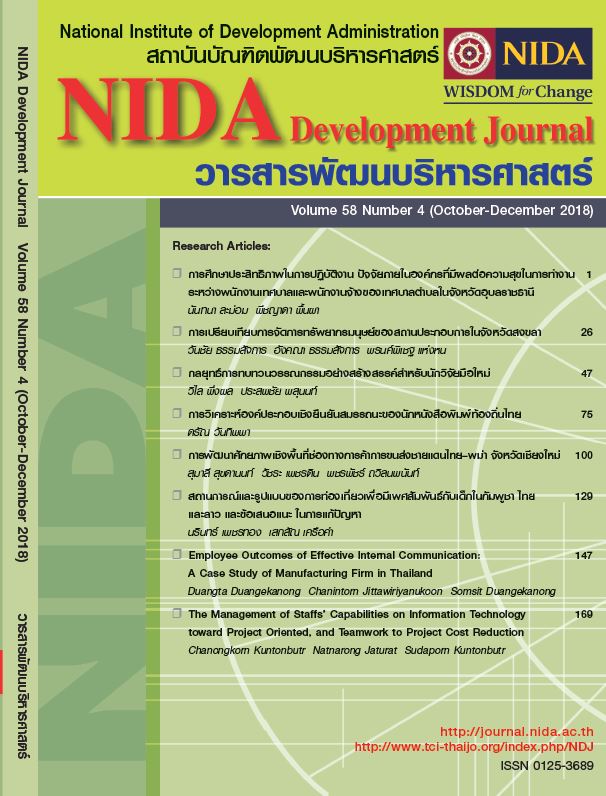The Situations and Characteristics of Child Sex Tourism (CST) in Cambodia Thailand and Lao PDR and the Recommended Solutions
Main Article Content
Abstract
This research qualitative aimed to study the situations and characteristics of Child Sex Tourism (CST) in Cambodia Thailand and Laos in order to provide the recommended solutions to this problem. Case studies, secondary analysis, and in-depth interviews were employed in this study. The 10 targeted key informants for the interviews were from Police Region 2, Police Region 5, DSI, FACE Foundation, CST-related police units in Cambodia and Lao PDR. The findings reveal that the CST offenders mostly found in Thailand and Cambodia were males from western countries. Meanwhile, the CST victims were not much different in gender, mostly from broken family, poor, uneducated, or homeless. The techniques to commit CST included using a broker to bring the victim in, using money to lure the victim, using online network to get access and lure the victim, pretending to be a teacher, a head charity foundation or a good guy to get access to the victim. The recommended solutions to the problems include establishing the more effective law enforcement measures for combatting CST in order to create a better guardian for children, which in turn makes Thailand, Cambodia and Lao PDR less attractive to the CST offenders.
Article Details
References
Cohen, L. & Felson, M. (1979). Social change and crime rate trends: A routine activity approach. American Sociological Review, 44(4), 588-608.
David, F. (2000). Child sex tourism. Canberra: Australian Institute of Criminology.
ECPAT (2008). Combating child sex tourism: Questions & answers. Bangkok, Thailand:
Saladaeng Printing Co.Ltd. Retrieved from https://www.ecpat.net/sites/default/files/cst_faq_eng.pdf
ECPAT (n.d.). Child Sex Tourism in Thailand. Retrieved from
https://www.ecpat.org.uk/sites/default/files/thailand05.pdf
Hechler, D. (1995). Child sex tourism. New York: Don't buy Thai.
Lanning, K.V. (2010). Child molesters: A behavioral analysis for professionals investigating the sexual exploitation of children. NCMEC-National Center for Missing & Exploited Children.
Measham, F. (2015). The white male gaze that drives child sex tourism. Eureka Street, 25(14), 25-26.
Bangkok Post. (2014). Prison upheld for Dutch child molester. Retrieved from https://www.bangkokpost.com/news/crime/440169/prison-upheld-for-dutch- child-molester.
Tchividjian, B. (2015). Catching American sex offenders overseas. Rhymes with Religion | Boz Tchividjian's Blog at Religion News Service, 2015-4.
Territo, L., & Glover, N. (2014). Criminal investigation of sex trafficking in America. Boca Raton : CRC Press, Taylor and Francis Group.
Terry, K. & Tallon, J. (2004). Child Sexual Abuse: A Review of the Literature. John Jay College.
Terry, K. J. (2015). Sex offender laws in the United States: smart policy or disproportionate sanctions?. International Journal of Comparative and Applied Criminal Justice, 39(2), 113-127.
United States Department of Justice. (2016). U. S. Citizen Sentenced to Ten Years’
Imprisonment for Traveling to Foreign Country to Have Sex with A Minor. California. Retrieved from https://www.justice.gov/usao-ndca/pr/u-s-citizen-sentenced-ten-years-imprisonment-traveling-foreign-country-have-sex-minor
von Hentig, H. (1948). The Criminal and His Victim: Studies in the Sociobiology of Crime. New Haven, CT: Yale University Press.

